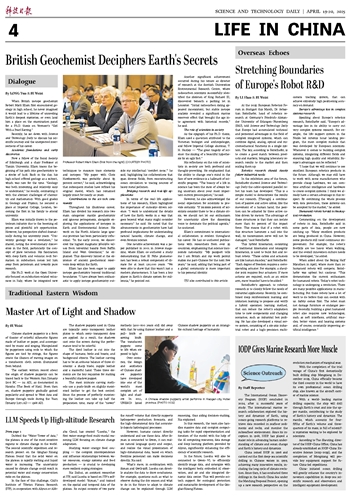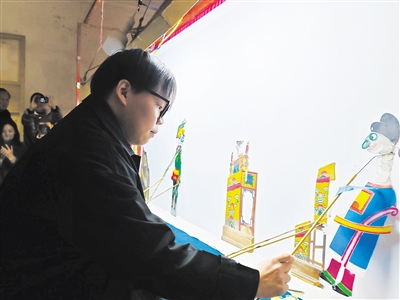
 |
| A Chinese shadow puppetry artist performs in Xiaogan city, Hubei province. (PHOTO: VCG) |
Chinese shadow puppetry is a form of theater of colorful silhouette figures made of leather or paper, and accompanied by music and singing. Manipulated by puppeteers using rods to which the figures are tied by strings, the figures create the illusion of moving images on a translucent cloth screen illuminated from behind.
The earliest written record about the origin of shadow puppetry can be traced back to the Western Han Dynasty (206 BC — 24 AD), as documented in Hanshu (The Book of Han). From then on, shadow puppetry gradually gained popularity and spread to West Asia and Europe through trade during the Yuan Dynasty (1271 AD — 1368 AD).
The shadow puppets used in China are typically semi-transparent leather plates to which semi-transparent dyes are applied. As a result, the shadows cast onto the screen during the performance tend to be colorful.
The dyed leather is cut into the shape of humans, birds and beasts, and background objects. The leather carving has to be an arduous balance of three elements: a sharp blade, supple leather and a masterful hand. These three elements are the key requisites for making a beautiful shadow puppet.
The most intricate carving methods use a push-knife on slightly moistened leather to get the best control. Since the process of perfectly moistening the leather can take up half the preparation time, many of the "newer" methods (400-600 years old) did away with that by using thinner leather and a pull-knife or sawing knife. The translucent puppets come to life when exposed to light.
Over centuries, the design and aesthetics of Chinese shadow puppetry have developed into one of the world's most complex art of light and shadow. In 2011, UNESCO listed Chinese shadow puppetry as an intangible cultural heritage of humanity.







